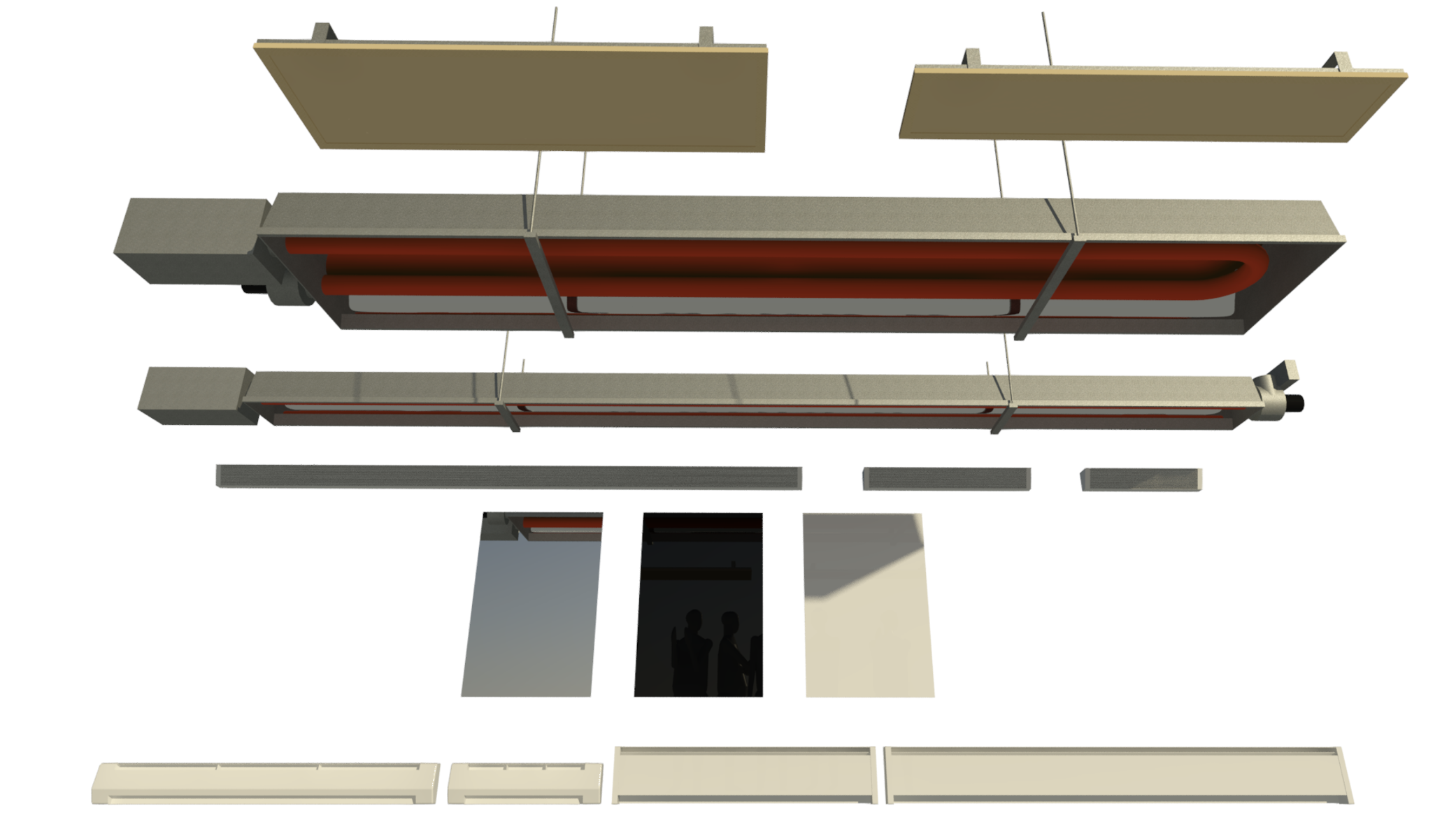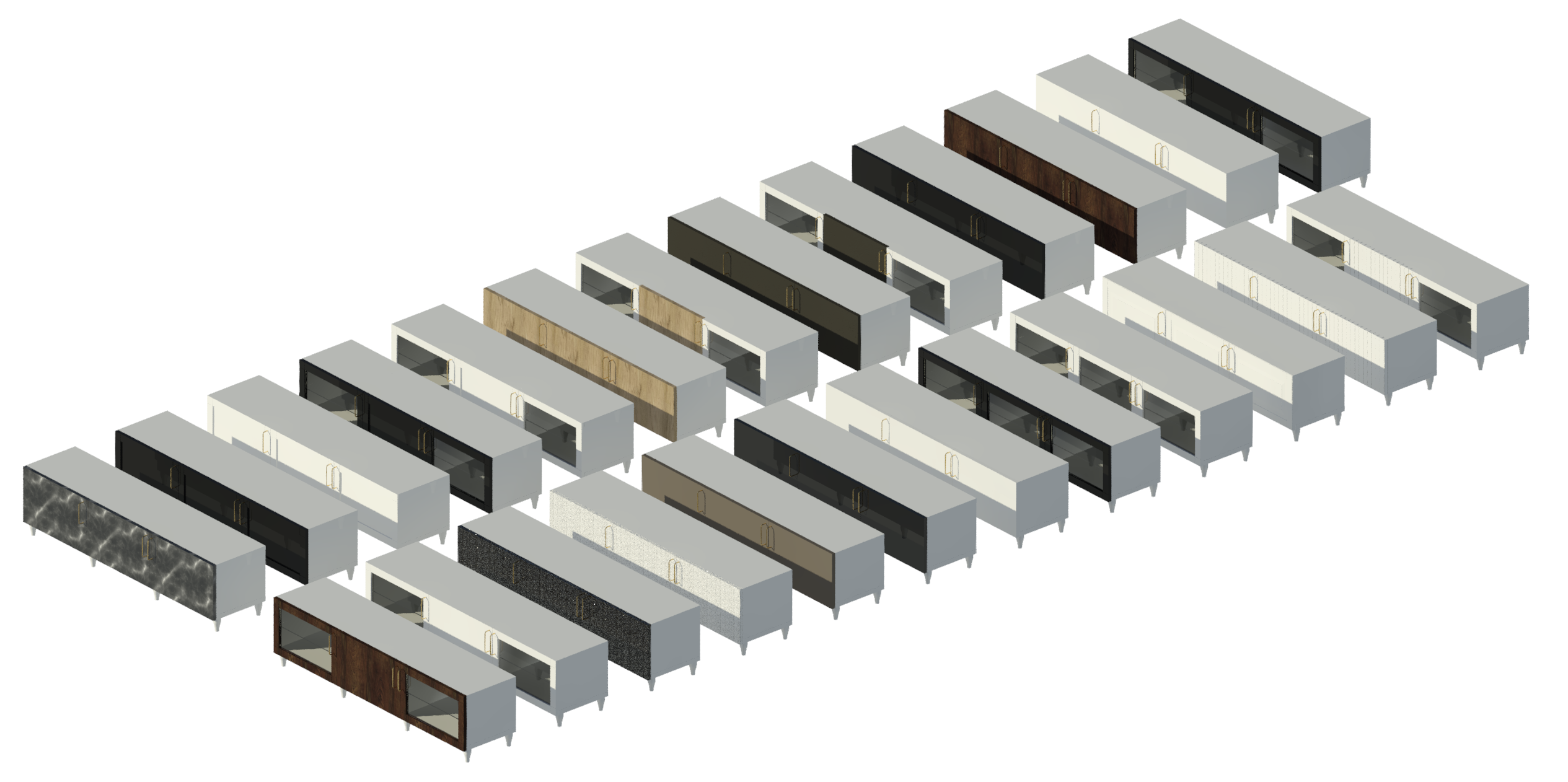
Radiant Heating
Radiant heating directly warms people and surfaces, offering better energy efficiency compared to convection heating systems. Instead of continuously circulating warm air like convection heating, radiant heat bounces back, creating a warmer environment.
This collection of radiant heating Revit families has you covered with radiant heat panels, radiant tube heaters, baseboard heaters and cove heaters. A convection heating collection is coming soon, so stay tuned!

Download the full collection here
Radiant Heat Panels
Common radiant heating installations include underfloor heating and radiant heat panels in the ceiling. In addition to being the more sustainable choice, they also reduce allergens and can be more hygienic than convection heating, making them especially suitable for the healthcare industry. Due to the walls absorbing a portion of the heat, radiant heating can also reduce the chance of mold.

Wall-mounted radiant heat panels from WarmlyYours with three materials - mirror, black glass and white glass.

Ceiling-mounted radiant heat panels from REH have two panel sizes.

Fixing brackets and electrical connection box located at the top of the panels.
Radiant Tube Heaters
From the manufacturer Space-Ray, we have two radiant tube heaters. The NXS and NXU models have L-shaped (linear) and U-shaped radiant tubing. Both families have 12 types, driven by a type catalog. The types are defined by heating capacities and the type of gas used—propane or natural gas.

L-Shaped radiant tube heater.

U-shaped radiant tube heater.
The radiant tube heaters use generic bracket and drop rods. These drop rods can be quickly dragged, aligned and locked to any reference level or geometry (such as a structural slab) within a Revit project. If the reference level is then moved, the drop rods will stretch to fit, while the unit stays correctly in place.

Unit drop rods dragged to soffit level using Revit grippies and locked.

Drop rod ends now move with the soffit level.
Cove Heaters
The collection contains the KCV cove heater from manufacturer King. Cove heaters are wall-mounted close to the ceiling. Their location allows the radiant panels to direct heat to the room’s inhabitants without any obstruction by furniture or other objects. They also provide a small amount of convection heating, as cold air is naturally drawn through the bottom of the unit and warm air exits from the top. The family contains 24 types, managed by a type catalog and defined by heating capacity and voltage.

Wall-mounted cove heater from King.

Various lengths and heat capacities.
Baseboard Heaters
This system is sometimes referred to as skirting board heating. As the name suggests, it runs at a low level with the room skirting. It is much more efficient than conventional radiators, as they provide a better distribution of heat. From manufacturer Cadet, we’ve included a hydronic-electric baseboard heater with 15 types, accounting for variations in voltage and heat capacity.

Wall-mounted baseboard heater from Cadet.

Come in a series of lengths defined by heat capacity.
Lastly, we’ve included two more baseboard heaters from the manufacturer King. Each Revit family has over 30 types to suit material finish, voltage and heat capacity, with the types managed by a type catalog.

The wall-mounted baseboard heater from King comes in two finishes - white and almond.
That’s a wrap on our Radiant Heating collection! If you have questions or feedback on this content, send us an email at support@kinship.io. We review all feedback carefully.
Get the Collection
Click here to view and download the full collection.
Collection Content List
- Wall-mounted radiant heat panel from WarmlyYours.
- Ceiling-mounted radiant heat panel from Radiant Electric Heat.
- Wall-mounted baseboard heater from Cadet.
- Two wall-mounted baseboard heaters from manufacturer King.
- Wall-mounted cove heater from King.
- L-shaped radiant tube heater from Space-Ray.
- U-shaped radiant tube heater from Space-Ray.



